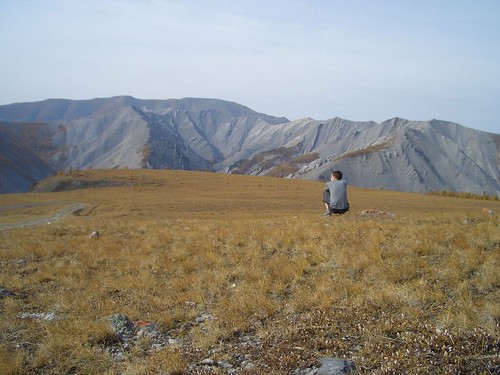Sapa
I never wrote about the last two days in Sapa. I was there on 12/8 and 12/9. On the 8th, Hoa (my guide) and I went trekking. We walked a path that he described as the 'hard way'. We traversed footpaths that the Black H'mong use to make the daily journey to their rice fields. While we were walking, I was receiving strange looks from the locals. I'm assuming it's because the foreigners take the more trodden path. From the path, I noticed something which looked like a well. As we approached, Hoa explained that the contraption was used to mill rice. The 'mill' was placed adjacent to a stream. In the water, a long piece of bamboo had been cut in half, creating a trough. The water ran into the bamboo and emptied into something that resembled a bucket. Once the bucket was full, it would lift a piece of stone that was connected to the bucket on another piece of bamboo. The water would empty back into the stream, and the stone would slam onto the rice. I was flabbergasted by the ingenuity.
I never wrote about the last two days in Sapa. I was there on 12/8 and 12/9. On the 8th, Hoa (my guide) and I went trekking. We walked a path that he described as the 'hard way'. We traversed footpaths that the Black H'mong use to make the daily journey to their rice fields. While we were walking, I was receiving strange looks from the locals. I'm assuming it's because the foreigners take the more trodden path. From the path, I noticed something which looked like a well. As we approached, Hoa explained that the contraption was used to mill rice. The 'mill' was placed adjacent to a stream. In the water, a long piece of bamboo had been cut in half, creating a trough. The water ran into the bamboo and emptied into something that resembled a bucket. Once the bucket was full, it would lift a piece of stone that was connected to the bucket on another piece of bamboo. The water would empty back into the stream, and the stone would slam onto the rice. I was flabbergasted by the ingenuity.
The valley surrounding the villages is beautiful - 1500m mountains line the valley like security guards. A small river snaked across the valley floor, providing water for the rice. The rice fields splayed out from the river in all directions. As the mountainside became steeper, the rice fields turned into rice terraces. When it was too steep for a rice terrace, the earth went back to its original form. Hoa stopped to prepare lunch and pointed me in a direction to continue hiking. I started climbing towards the bamboo forest along a very smooth tract of earth. I later realized why the earth was so smooth; the locals pulled the logs down the mountainside for firewood & building supplies.
We ate lunch at a Dzai family's house. We sat on plastic children's chairs in the cooking room. For some reason, Vietnamese don't like regular-sized chairs and tables. I was thinking about how funny it would look if I bought a set of kid-sized chairs for my patio. I had to chuckle in awe - the context of a situation greatly influences your perception. For lunch, we had white rice, taro potatoes, and watercress. The family gladly served me rice wine with my meal, although I was secretly ecstatic that I also had a bottle of water - the wine tasted like I imagine gasoline to taste like. They served it in a shot glass, and it took all of my mental fortitude to finish all of it. I couldn't finish all of my food though, and I was feeling ashamed. People all around me were dying for a meal, yet there was still heaps of food on my plate after I had filled my belly.
We visited a few villagers homes - the homes consisted of nothing more than corrugated tin roofs held up by a bamboo frame. The exterior of the building is made out of a mud/rice leaf mixture. The floor is pounded earth. I've seen these people build the homes - the amount of labor is incredible. On one home, I saw 14 men and boys building. When I arrived, they were sitting around and chatting. They were waiting - waiting for the right time to place the highest piece of the frame. The time of day dictates when portions of the house are constructed. The day is broken into two hour segments, and each segment corresponds to an animal (similar animal as the Chinese zodiac animals). The owner of the house was born in the year of the horse, so everyone was waiting for the time when it was good for a horse to build.
A woman approached Hoa & I when we were watching them building the house. She was selling copper bracelets. I bought one of Ayano - I had been telling all Vietnamese vendors 'no' for days and I wanted to haggle. She started the bidding at 20,000 dong. I am proud of myself, because after a hard bargaining session of 30 seconds, the price was reduced to 11,000 dong. While I was walking away, I realized that I had saved myself $0.50; an exponentially greater value to the village woman than it would be to me.

No comments:
Post a Comment